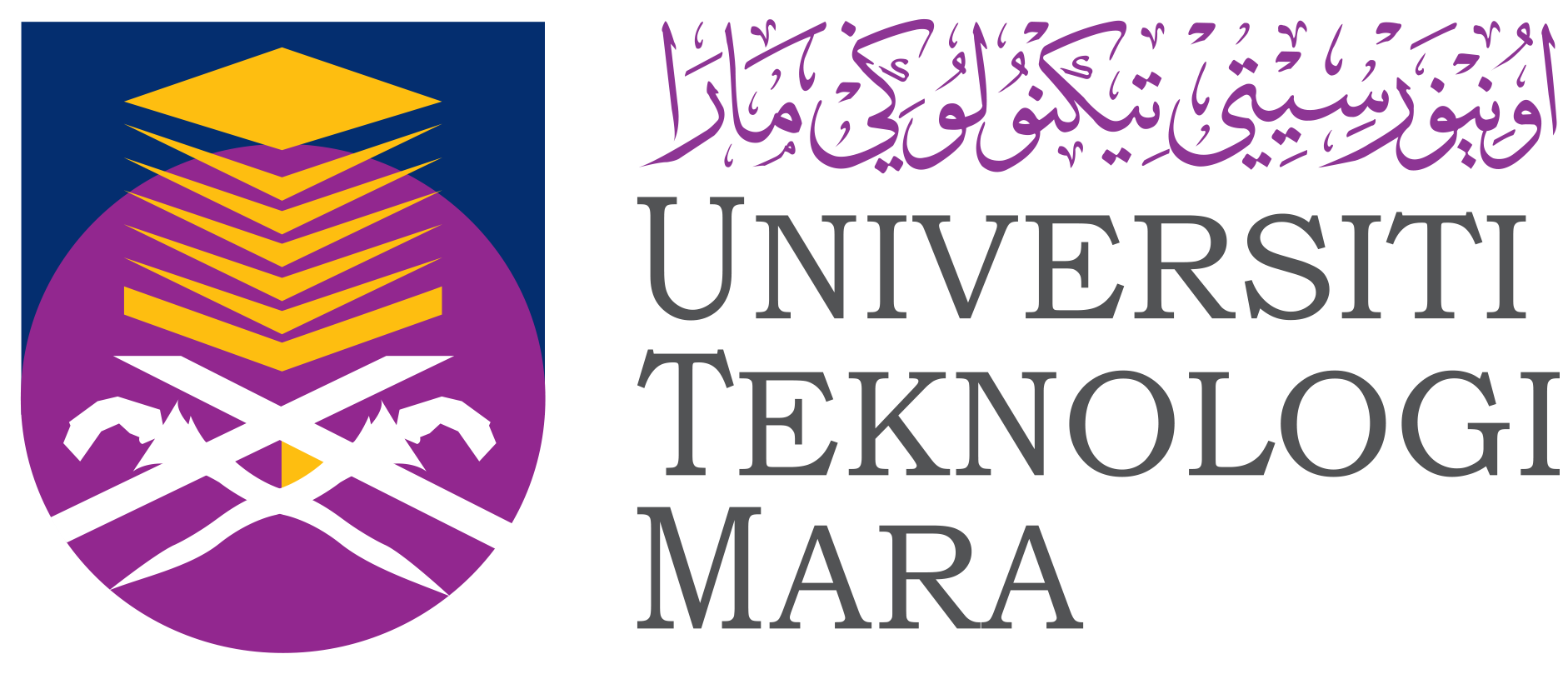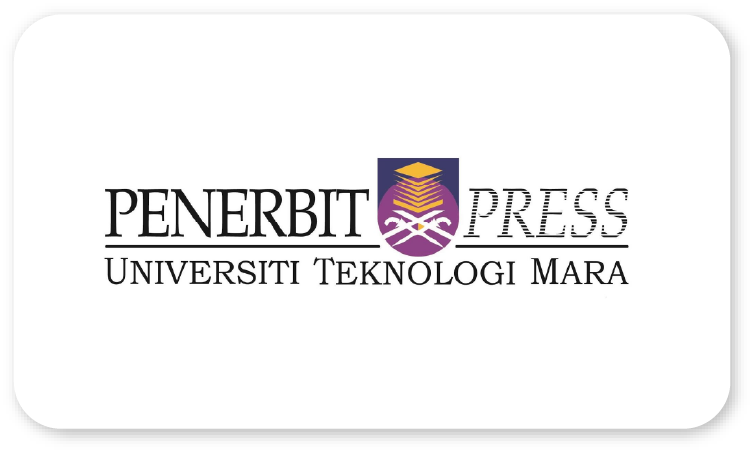
Exploring students’ perceptions on online learning environment across disciplines
Muhammad Zulfadhli Saifuddin
Department of English Language and Linguistics, University Teknologi MARA, Malaysia
Ahmad Asnawi Zamri
Department of English Language and Linguistics, University Teknologi MARA, Malaysia
Muhammad Haekal Kamarulzaman
Department of English Language and Linguistics, University Teknologi MARA, Malaysia
Siti Fauziana Zakaria
Department of English Language and Linguistics, University Teknologi MARA, Malaysia
Noor Lidyawani Mat Rani
Fully Residential Schools Management Division, Ministry of Education, Malaysia
Abstract
While online education is not a new phenomenon, the COVID-19 pandemic necessitated a sudden shift to online learning, significantly impacting the higher education sector. This study investigates students' perceptions of their online learning environment across different disciplines at Universiti Teknologi MARA. Utilizing the How People Learn (HPL) framework by Bransford et al. (2004), the study explores four dimensions: learner-centred, community-centred, assessment-centred, and knowledge-centred learning environments. A quantitative approach with purposive sampling was employed, gathering data from 231 students across Applied Sciences, Business Management, and Social Sciences and Humanities. The study reveals that, while students perceive their online learning environments positively, there are notable differences across disciplines. Business Management students reported higher satisfaction in community and assessment-centred dimensions. In contrast, Applied Sciences and Social Sciences and Humanities students indicated room for improvement in integrating prior knowledge and collaborative activities. These findings highlight the need for tailored strategies to enhance the effectiveness of online learning environments across various disciplines. By highlighting these variations, the findings highlight the importance of discipline-specific strategies in optimizing online learning. Tailored pedagogical approaches, faculty development initiatives, and supportive technological infrastructures can address each field’s unique challenges, thereby fostering more inclusive and effective online learning experiences across diverse academic contexts.
Keywords:Online learning, Students’ perception, Higher education, How People Learn framework, Disciplinary differences
References:
Abdrahim, N. A. (2018). Distance Education: Historical Overview and Current Practices in Malaysian Higher Education. International Journal of Academic Research in Business and Social Sciences, 8(12), 33–45.
Adams, D., Sumintono, B., Mohamed, A., & Mohamad Noor, N. S. (2018). E-Learning Readiness among Students of Diverse Backgrounds in a Leading Malaysian Higher Education Institution. Malaysian Journal of Learning and Instruction, 15(2), 227–256.
Agormedah, E. K., Henaku, E. A., Ayipah, E. K., & Ansah, J. A. (2020). Online learning in higher education during COVID-19 pandemic: A case of Ghana. Journal of Educational Technology & Online Learning, 3(3), 183–210.
Ali, W. (2020). Online and remote learning in higher education institutes: A necessity in light of COVID-19 pandemic. Higher Education Studies, 10(3), 16–25.
Arık, S. (2021). Distance education learning environments during COVID-19 pandemic from student perspectives: A study in Turkish higher education. Journal of Pedagogical Research, 5(2), 103-118.
Baden, D., & Parkes, C. (2013). Experiential learning: Inspiring the business leaders of tomorrow. Journal of Management Development, 32(3), 295-308.
Barrot, J. S., Masangya, E. M., & Lira, J. I. G. (2023). Outcomes-Based Teaching and Learning Assessment Instrument for Teachers in Higher Education. Curriculum and Teaching, 38(2), 21-35.
Birol, G., Liu, S. Q., Smith, H. D., & Hirsch, P. (2006). Educational Modules in Tissue Engineering Based on the. Bioscience Education e-Journal, 7, 6.
Bloxham, S., & West, A. (2007). Learning to write in higher education: Students’ perceptions of an intervention in developing understanding of assessment criteria. Teaching in Higher Education, 12(1), 77-89.
Bonk, C. J., & Zhang, K. (2006). Introducing the R2D2 model: Online learning for the diverse learners of this world. Distance Education, 27(2), 249-264.
Bozkurt, A., & Sharma, R. C. (2021). On the verge of a new renaissance: Care and empathy oriented, human-centered pandemic pedagogy. Asian Journal of Distance Education, 16(1), 1–10.
Bransford, J. D., Brown, A. L., & Cocking, R. R. (2004). How People Learn. Washington, DC: National Academy Press.
Bransford, J., Vye, N., & Bateman, H. (2002, April). Creating high-quality learning environments: Guidelines from research on how people learn. In The Knowledge Economy and Postsecondary Education: Report of Workshop (pp. 159-198).
Brown, S., & Glasner, A. (1999). Assessment matters in higher education: choosing and using diverse approaches. McGraw-Hill Education (UK).
Campbell, S., Greenwood, M., Prior, S., Shearer, T., Walkem, K., Young, S., Bywaters, D., & Walker, K. (2020). Purposive Sampling: Complex or Simple? Research Case Examples. Journal of Research in Nursing, 25(8) 652–661.
Clark, R. C., & Mayer, R. E. (2016). E-learning and the science of instruction: Proven guidelines for consumers and designers of multimedia learning. John Wiley & Sons.
Cohen, J. (1988). Statistical Power Analysis For The Behavioral Sciences (2nd ed.). Routledge.
Creswell, J. W., & Creswell, J. D. (2017). Research Design: Qualitative, Quantitative, and Mixed Methods Approaches (5th ed.). SAGE.
Dhanarajan, G. (1986). Distance education in Malaysia. PUB TYPE, 557.
Dillenbourg, P. (2002). Over-scripting CSCL: The risks of blending collaborative learning with instructional design. Three worlds of CSCL. Can we support CSCL?. 61-91.
Dillman, D. A., Smyth, J. D., & Christian, L. M. (2014). Internet, phone, mail, and mixed-mode surveys: The tailored design method. John Wiley & Sons.
Field, A. (2018). Discovering statistics using IBM SPSS statistics (5th ed.). SAGE.
Garrison, D. R., & Kanuka, H. (2004). Blended learning: Uncovering its transformative potential in higher education. The Internet and Higher Education, 7(2), 95-105.
Garrison, D. R., Cleveland-Innes, M., & Fung, T. S. (2010). Exploring causal relationships among teaching, cognitive and social presence: Student perceptions of the community of inquiry framework. The Internet and Higher Education, 13(1-2), 31-36.
Gikandi, J. W., Morrow, D., & Davis, N. E. (2011). Online formative assessment in higher education: A review of the literature. Computers & Education, 57(4), 2333-2351.
Hassan,N.M., Majid,N.A., & Hassan,N.K.A. (2020). Validation of Learning Environment inventory for secondary school contexts. International Journal of Evaluation and Research in Education, 9(2), 379-384.
Hodges, C., Moore, S., Lockee, B., Trust, T., & Bond, A. (2020). The difference between emergency remote teaching and online learning. Educause Review, 27.
Ilagan, J. B., Uy, M. L., Kho, V. N. & Olpoc, J. (2021). Facilitating collaborative learning among businesses, faculty, and students in a purely online setting. Proceedings of the 29th International Conference on Computers in Education. Asia-Pacific Society for Computers in Education, 614-619.
Kalyuga, S. (2007). Expertise reversal effect and its implications for learner-tailored instruction. Educational Psychology Review, 19(4), 509-539.
Kapasia, N., Paul, P., Roy, A., Saha, J., Zaveri, A., Mallick, R., Barman, B., Das, P., & Chouhan, P. (2020). Impact of lockdown on learning status of undergraduate and postgraduate students during COVID-19 pandemic in West Bengal, India. Children and Youth Services Review, 116.
Katsarou, E., & Chatzipanagiotou, P. (2021). A Critical Review of Selected Literature on Learnercentred Interactions in Online Learning. The Electronic Journal of e-Learning, 19(5), pp. 349-362.
Kaymak, Z. D., Güngören, Ö. C., Akgün, Ö. E., & Kıyıcı, M. (2020). Social networking literacy scale: a study of validity and reliability. Malaysian Online Journal of Educational Technology, 9(1), 97-107. https://doi.org/10.17220/mojet.2021.9.1.248
Ke, F. (2010). Examining online teaching, cognitive, and social presence for adult students. Computers & Education, 55(2), 808-820.
Ke, F., & Kwak, D. (2013). Constructs of student-centred online learning on learning satisfaction of a diverse online student body: A structural equation modeling approach. Journal of Educational Computing Research, 48(1), 97-122.
Khamitovna, G. M. (2022, January). ASSESSMENT AS AN INTEGRATIVE PART OF THE TEACHING PROCESS. In Conference Zone (pp. 96-98).
Khatimah, H. (2021). Major Impact of Classroom Environment in Students ‘Learning. Journal of Education Review Provision 1(1), 12-17.
Kolb, A. Y., & Kolb, D. A. (2005). Learning styles and learning spaces: Enhancing experiential learning in higher education. Academy Of Management Learning & Education, 4(2), 193-212.
Laili, R. N., & Nashir, M. (2021). Higher education students’ perception on online learning during Covid-19 pandemic. Edukatif: Jurnal Ilmu Pendidikan, 3(3), 689-697.
Laurillard, D. (2013). Rethinking University Teaching: A Conversational Framework For The Effective Use Of Learning Technologies (2nd Ed.). Routledge.
Laurillard, D. (2013). Teaching As a Design Science: Building Pedagogical Patterns For Learning And Technology. Routledge.
Lavy, I., & Shriki, A. (2014). Engaging prospective teachers in peer assessment as both assessors and assesses: The case of geometrical proofs. International Journal for Mathematics Teaching and Learning, 1-32.
Lizzio, A., Wilson, K., & Simons, R. (2002). University students' perceptions of the learning environment and academic outcomes: implications for theory and practice. Studies in Higher Education, 27(1), 27-52.
Magulod, G. (2019). Learning Styles, Study Habits and Academic Performance of Filipino University Students in Applied Science Courses: Implications for Instruction. Journal of Technology and Science Education, 9(2), 184-198.
Mantiri, O. (2013). The Influence of culture on learning styles. Available at SSRN 2566117.
Mayer, R. E. (2009). Multimedia Learning (2nd ed.). Cambridge University Press.
Means, B. (2010). Technology and education change: Focus on student learning. Journal Of Research on Technology In Education, 42(3), 285-307.
Means, B., & Neisler, J. (2021). Teaching and learning in the time of COVID: The student perspective. Online Learning, 25(1), 8–27.
Merriam, S. B., & Tisdell, E. J. (2016). Qualitative Research: A Guide to Design and Implementation (4th ed.). Jossey-Bass.
Moore, J.L., Dickson-Deane, C., & Galyen, K. (2011). E-Learning, online learning, and distance learning environments: Are they the same? Internet Higher Education, 14(2), 129-35.
Moorhouse, B. L. (2020). Adaptations to a face-to-face initial teacher education course “forced” online due to the COVID-19 pandemic. Journal of Education for Teaching, 46(4), 609–611.
Ouchauka, L., Laouina, Z., Moussetad, M., Talbi, M., Amrani, N. E., ElKouali, M. (2021). The Effectiveness of a Learner-Centred Pedagogical Approach with Flipped Pedagogy and Digital Learning Environment in Higher Education Feedback on a Cell Biology Course. International Journal of Emerging Technologies in Learning, 16(12).
Pallant, J. (2020). SPSS survival manual: A step by step guide to data analysis using IBM SPSS (7th ed.). Open University Press.
Palou, E., Gazca, L., García, J. A. D., Lobato, J. A. R., Ojeda, L. G. G., Arnal, J. F. T., ... & Garibay, J. M. (2012). High-quality learning environments for engineering design: Using tablet PCs and guidelines from research on how people learn. International Journal of Food Studies, 1(1).
Pham, N. T., & Van Nghiem, H. (2022). Online teaching satisfaction amid the covid-19 pandemic: evidence from a Vietnamese higher education context. International Journal of TESOL & Education, 2(1), 310-326.
Ramadan Elbaioumi Shaddad, A., & Jember, B. (2024). A step toward effective language learning: an insight into the impacts of feedback-supported tasks and peer-work activities on learners’ engagement, self-esteem, and language growth. Asian-Pacific Journal of Second and Foreign Language Education, 9(1), 39.
Razami, H. H. & Ibrahim, R. (2021). Distance Education during COVID-19 Pandemic: The Perceptions and Preference of University Students in Malaysia Towards Online Learning. International Journal of Advanced Computer Science and Applications, 12(4), 118-126.
Rojabi, A. R. (2020). Exploring EFL Students' Perception of Online Learning via Microsoft Teams: University Level in Indonesia. English Language Teaching Educational Journal, 3(2), 163-173.
Saad, A. & Choo, C. Y. (2021). First Year Pharmacy Students’ Perceptions on ODL during the Covid-19 Pandemic: A Thematic Analysis. Malaysian Journal of Pharmacy, 7(2).
Sadler, D. R. (1989). Formative assessment and the design of instructional systems. Instructional Science, 18(2), 119-144.
Szeto, E., & Cheng, A. Y. (2016). Towards a framework of interactions in a blended synchronous learning environment: what effects are there on students' social presence experience?. Interactive Learning Environments, 24(3), 487-503.
Tabachnick, B. G., & Fidell, L. S. (2019). Using Multivariate Statistics (7th Ed.). Pearson.
Tanjung, F. Z. & Utomo, A. (2021). Investigating EFL Students’ Perception on Online Learning Amidst COVID-19 Pandemic. International Journal of Indonesian Education and Teaching, 5(1), 102-115.
World Health Organization. (2020). Coronavirus disease (COVID-2019) situation reports. Geneva. Retrieved from: https://www.who.int/emergencies/diseases/novel-coronavirus-2019/situation-reports/
Xu, D., & Jaggars, S. S. (2014). Performance gaps between online and face-to-face courses: Differences across types of students and academic subject areas. The Journal of Higher Education, 85(5), 633-659.
Yorke, M. (2003). Formative assessment in higher education: Moves towards theory and the enhancement of pedagogic practice. Higher Education, 45, 477-501.



